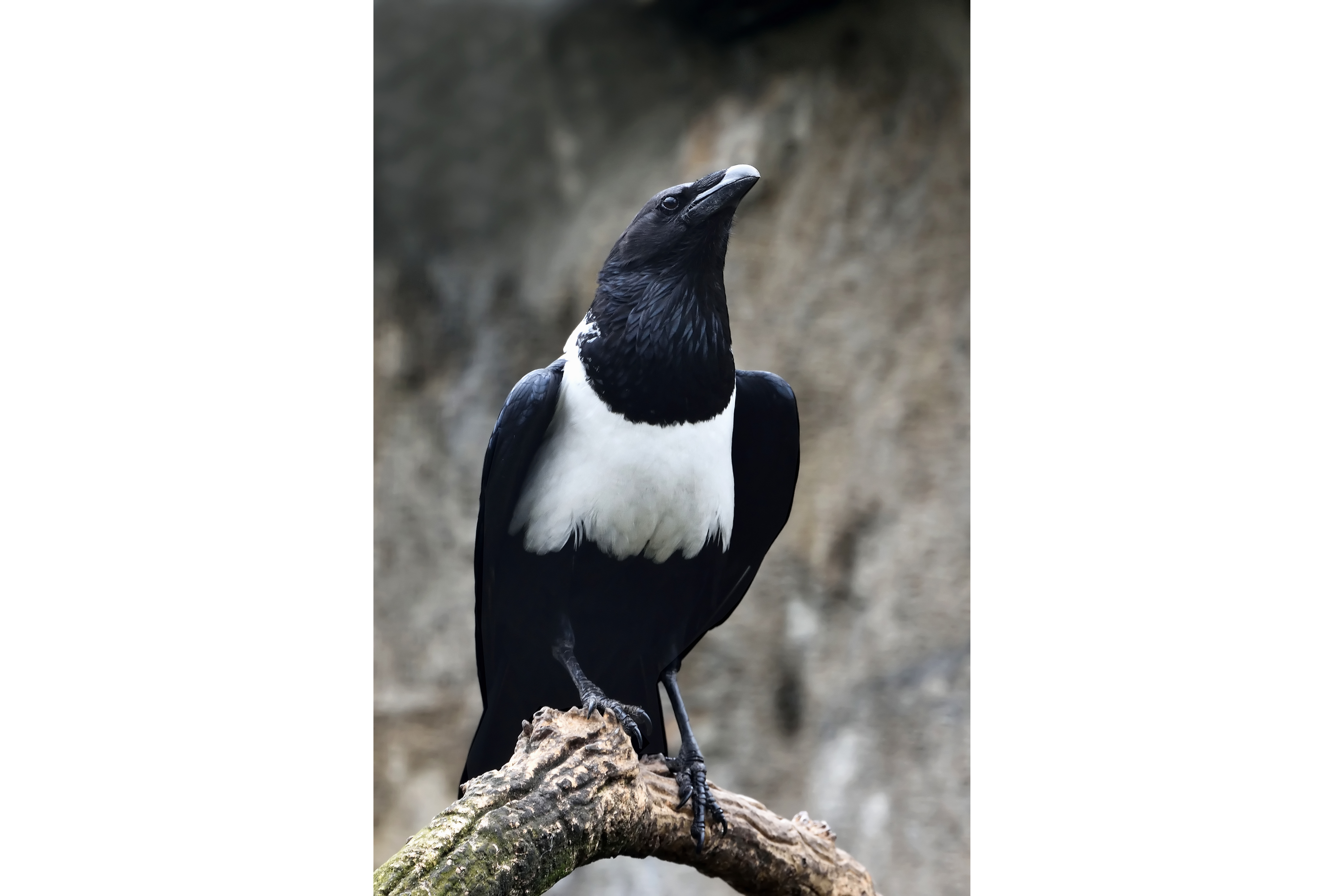Pied crow
(Corvus albus)

Description
Corvus albus, commonly known as the Pied Crow, is a species of bird belonging to the Corvidae family. It is found in sub-Saharan Africa and is one of the most widespread and abundant corvid species on the continent. The Pied Crow has a distinctive black-and-white plumage pattern and is known for its intelligent behavior, adaptability, and opportunistic feeding habits. Physical Description: The Pied Crow is a medium-sized bird, measuring around 45–50 cm in length and weighing approximately 400–600 grams. It has a black head, neck, wings, and tail, with a white chest, belly, and upper back. The wingspan of the Pied Crow is around 100 cm. The bill of the Pied Crow is strong and curved, and is used for a variety of tasks such as cracking open nuts and seeds, digging into the ground for insects and other invertebrates, and scavenging carrion. The eyes are small and dark, and the feet and legs are black. Habitat and Range: The Pied Crow is found in a variety of habitats throughout sub-Saharan Africa, including savannas, grasslands, woodlands, forests, and urban areas. It is particularly common in areas where humans have modified the landscape, such as agricultural fields and urban areas. The range of the Pied Crow extends from Senegal in the west to Somalia in the east, and from Ethiopia in the north to South Africa in the south. It is a resident bird in most of its range, but some populations may migrate locally in response to seasonal changes in food availability. Behavior: The Pied Crow is a highly social bird and is usually found in pairs or small family groups. It is known for its intelligence and problem-solving abilities, and has been observed using tools to obtain food and solve puzzles. The Pied Crow is an opportunistic feeder and will consume a wide range of food items, including insects, small mammals, birds, reptiles, carrion, and human food waste. It has been known to follow human hunters and scavengers to take advantage of their kills. Breeding: The breeding season of the Pied Crow varies depending on the location, but generally occurs during the rainy season. The male and female work together to build a nest, which is a large structure made of twigs, branches, and other materials. The female typically lays 3–5 eggs, which are incubated by both parents for around 18–21 days. The chicks are born naked and helpless, and are fed by both parents until they are ready to fledge, which usually occurs at around 4–6 weeks of age. Conservation Status: The Pied Crow is listed as a species of Least Concern by the International Union for Conservation of Nature (IUCN). This is due to its widespread distribution and abundance throughout its range, as well as its ability to adapt to human-modified habitats. However, some populations of Pied Crows may be affected by habitat loss and fragmentation, persecution by humans, and predation by other animals such as domestic dogs and cats. Conclusion: In summary, the Pied Crow is a fascinating and adaptable corvid species found throughout sub-Saharan Africa. Its distinctive black-and-white plumage, intelligence, and opportunistic feeding habits make it a well-known and well-loved bird in many areas. While the Pied Crow is currently considered to be of Least Concern, continued monitoring of its populations and conservation efforts may be needed to ensure its long-term survival.
Taxonomic tree:







